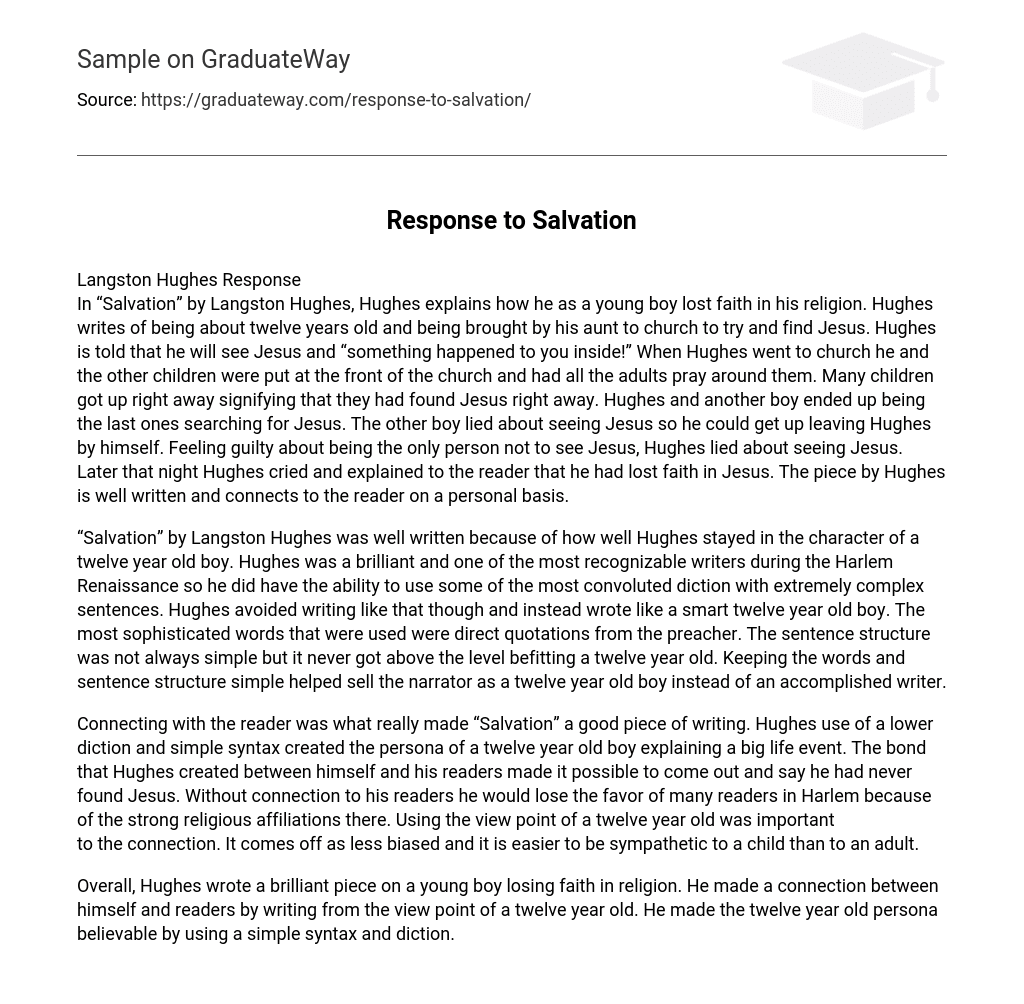Langston Hughes recounts his loss of faith in religion as a young boy in his piece “Salvation.” When he was around twelve years old, Hughes went to church with his aunt, hoping to find Jesus and experience a transformative moment. During the church service, Hughes and the other children were seated at the front while the adults prayed nearby. Many of the children quickly claimed to have found Jesus, but Hughes and another boy continued searching until they were the last ones remaining. The other boy falsely claimed to have seen Jesus so he could leave, leaving Hughes alone. Overwhelmed by guilt for not seeing Jesus like everyone else, Hughes eventually lied about seeing him too. That night, filled with remorse, Hughes cried and confessed that he had lost faith in Jesus. This well-written piece allows readers to establish a personal connection with Hughes.
Langston Hughes’ “Salvation” is a well-written piece that effectively maintains the perspective of a twelve-year-old boy. Despite being a renowned writer associated with the Harlem Renaissance and possessing the ability to utilize complex language and sentence structure, Hughes deliberately avoids employing convoluted diction. Instead, he adopts the voice of an intelligent young boy, and even the most sophisticated words used in the story are taken directly from the preacher’s sermons. Although the sentence structure can be somewhat intricate at times, it never exceeds what is appropriate for a twelve-year-old. By using simple language and sentence construction, Hughes convincingly portrays the narrator as a young boy, rather than an accomplished writer.
The connection with the reader was the key element that made “Salvation” an effective piece of writing. Hughes’ choice of simple language and syntax presented the perspective of a twelve-year-old boy describing a significant life event. This bond established by Hughes enabled him to openly admit that he had never experienced a religious awakening. Without this connection to his readers, Hughes would risk losing the support of many individuals in Harlem who strongly adhere to religious beliefs. The utilization of a young narrator was crucial in establishing this connection, as it evoked less bias and allowed for greater empathy towards the child.
In his brilliant piece, Hughes effectively portrays a young boy’s loss of faith in religion. By adopting the viewpoint of a twelve-year-old, he establishes a connection with readers, making his narrative relatable. Hughes successfully creates a believable twelve-year-old persona through the use of simple syntax and diction.





